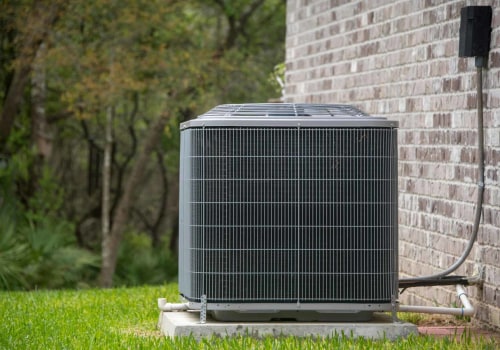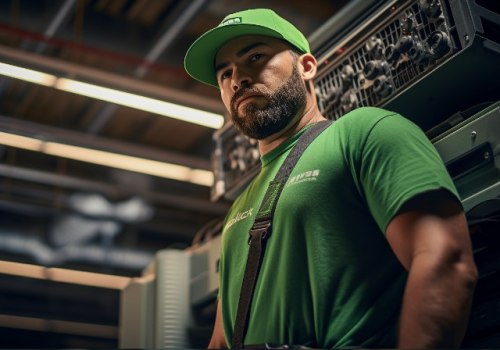HVAC UV Light Installation Service in Brickell FL
The installation of HVAC UV light systems in residential and commercial buildings has gained attention as a potential solution to improve indoor air quality. This explores the benefits of such installations, including the eradication of harmful bacteria and mold, elimination of pathogens in HVAC systems, enhancement of health and well-being, increased energy efficiency, reduced allergens, and asthma triggers, as well as long-term cost savings. By adopting an academic style that is objective and impersonal, this aims to provide an informative overview of HVAC UV light installation service in Brickell, FL.
Improve Indoor Air Quality
Improving indoor air quality is an important aspect of maintaining a healthy and comfortable environment. There are various ways to purify the air inside buildings, each with its benefits. One common method is through the use of air purifiers. These devices work by removing pollutants and contaminants from the air, such as dust, pollen, pet dander, and smoke particles. By filtering out these harmful substances, air purifiers can significantly improve indoor air quality and reduce the risk of respiratory issues.
Another way to purify indoor air is through proper ventilation. Good ventilation helps to remove stale or polluted indoor air and replace it with fresh outdoor air. This can be achieved by opening windows or using mechanical ventilation systems like exhaust fans or HVAC systems.
Having clean indoor air provides several benefits for occupants. First and foremost, it promotes better health by reducing exposure to allergens and irritants that can trigger allergies or asthma attacks. Clean air also improves cognitive function and productivity levels as it ensures a steady supply of oxygen to the brain. In addition, it creates a more pleasant environment by eliminating unpleasant odors and creating a feeling of freshness.
Kill Harmful Bacteria and Mold
Eliminating harmful bacteria and mold is a significant concern in ensuring healthy indoor environments. One effective method for achieving this goal is through the use of UV light technology. UV light benefits include its ability to kill microorganisms, such as bacteria and mold, by damaging their DNA and preventing them from reproducing.
UV light technology has been proven to be an effective tool in reducing the presence of harmful bacteria and mold in various settings, including HVAC systems, hospitals, and food processing facilities. When installed within HVAC systems, UV lights can target the areas where microbial growth is most likely to occur, such as cooling coils and drain pans. By continuously exposing these surfaces to UV light, the growth of bacteria and mold can be significantly inhibited.
Unlike traditional chemical disinfectants that may leave behind residue or have limited effectiveness against certain pathogens, UV light provides a non-toxic and environmentally friendly solution. It does not introduce any chemicals into the air or require extensive maintenance.
Eliminate Pathogens in HVAC System
One possible approach to reduce the presence of pathogens in HVAC systems is through the implementation of effective disinfection methods. UV light sterilization has emerged as a promising technique for eliminating pathogens in these systems. UV light has been shown to have germicidal effects by damaging the DNA and RNA of microorganisms, rendering them unable to reproduce and causing their death. This method is particularly useful in HVAC systems as it can target airborne pathogens and those present on surfaces within the system.
To effectively implement UV light sterilization in HVAC systems, proper maintenance is crucial. Regular cleaning and inspection of the system are necessary to ensure that UV lights are functioning optimally. It is important to consider factors such as the placement and intensity of the UV lights to effectively eliminate pathogens without causing harm to occupants or damaging other components of the HVAC system.
Enhance Health and Well-being
Enhancing health and well-being in indoor environments is a priority for ensuring the safety and comfort of occupants. One way to achieve this is by promoting wellness and boosting the immune system. Indoor spaces can harbor various pollutants, allergens, and pathogens that can negatively impact human health. To address these concerns, several strategies can be implemented.
Firstly, maintaining good indoor air quality (IAQ) is crucial. This involves proper ventilation to ensure adequate fresh air exchange and removal of pollutants. Additionally, regular cleaning and maintenance of HVAC systems can prevent the accumulation of dust, mold, and other contaminants that may compromise IAQ.
Another strategy is utilizing natural daylighting in buildings. Exposure to natural light has been shown to improve mood, sleep patterns, productivity, and overall well-being. Incorporating windows or skylights in building design allows for increased access to natural light.
Incorporating biophilic design elements such as plants or green walls can enhance indoor environments by promoting relaxation and reducing stress levels. Research suggests that exposure to nature has positive physiological effects on humans.
Lastly, creating spaces for physical activity within indoor environments can contribute to improved health outcomes. Incorporating walking paths or exercise areas encourages occupants to engage in physical exercise regularly.
Increase Energy Efficiency
Improving energy efficiency in indoor environments is a crucial aspect of sustainable building design and operation. In recent years, there has been an increasing focus on utilizing smart home technology and insulation upgrades to enhance energy efficiency in Brickell, FL. Smart home technology refers to the integration of various devices and systems within a residential setting to optimize energy consumption. These technologies can include programmable thermostats, occupancy sensors, and advanced lighting controls. By using these technologies, homeowners can actively manage their energy usage and reduce wasteful practices.
Insulation upgrades also play a significant role in improving energy efficiency in indoor environments. Proper insulation helps prevent heat loss during colder months and minimize heat gain during hotter months. This reduces the reliance on heating, ventilation, and air conditioning (HVAC) systems, thereby reducing overall energy consumption.
Smart home technology combined with insulation upgrades can provide substantial benefits for both homeowners and the environment. Not only do these measures help reduce greenhouse gas emissions by minimizing the use of fossil fuel-based energy sources, but they also lead to cost savings for homeowners through reduced utility bills.
Reduce Allergens and Asthma Triggers
Indoor allergens, such as dust mites, pet dander, mold spores, and pollen particles, are major contributors to allergic reactions and asthma symptoms. HVAC systems play a crucial role in maintaining indoor air quality by controlling these allergens.
One effective method for reducing allergens is the installation of UV lights within HVAC systems. Ultraviolet germicidal irradiation (UVGI) technology uses short-wavelength ultraviolet light to deactivate microorganisms like bacteria, viruses, and mold spores. By incorporating UV lights into HVAC units, these harmful pathogens can be neutralized before they circulate throughout the building.
UV lights have been found to inhibit the growth of mold colonies on cooling coils and other surfaces within HVAC systems. This prevents mold spores from being released into the air and reduces the risk of respiratory issues associated with mold exposure.
Proper maintenance of HVAC filters is essential for minimizing airborne allergens. Regular filter replacement or cleaning ensures that particles such as dust mites and pollen are captured effectively before being circulated back into indoor spaces.
Long-term Cost Savings
Long-term cost savings can be achieved by implementing measures to reduce energy consumption and optimize the efficiency of HVAC systems. Energy consumption is a significant expense for buildings, particularly those with large HVAC systems. By reducing energy consumption, building owners can save on their utility bills and ultimately improve their bottom line. One way to achieve this is by investing in energy-efficient HVAC equipment that meets or exceeds industry standards. This includes selecting units with high Seasonal Energy Efficiency Ratios (SEER) and ensuring proper sizing and installation. Regular maintenance of HVAC systems is also important in achieving long-term cost savings.
Maintenance expenses are another area where significant savings can be realized over time. Neglecting regular maintenance can lead to system inefficiencies, breakdowns, and costly repairs. The implementation of preventative maintenance programs helps identify and address potential issues before they become major problems. These programs typically include tasks such as filter replacement, coil cleaning, lubrication of moving parts, and overall system inspections.
Investing in energy-efficient technology and implementing proactive maintenance strategies may require an upfront investment but will result in substantial long-term cost savings through reduced energy consumption and minimized maintenance expenses. Building owners should consider these measures as part of their overall financial strategy for optimizing HVAC operations while simultaneously reducing costs.
Frequently Asked Questions
How long does the installation process typically take for HVAC UV light systems?
The installation time for HVAC UV light systems varies depending on the complexity of the system and the skill of the installer. However, typical installations can take anywhere from a few hours to a full day. The benefits of these systems include improved indoor air quality and reduced microbial growth in HVAC systems.
Are there any potential drawbacks or side effects to using HVAC UV light systems?
Potential drawbacks of HVAC UV light systems include ozone production, limited coverage area, and the need for regular maintenance. However, they are effective in reducing airborne pathogens by inactivating viruses, bacteria, and mold spores.
Is it necessary to have a professional install the UV light system, or can it be done as a DIY project?
The installation of HVAC UV light systems can be carried out either as a DIY project or by hiring a professional. Considerations such as cost-effectiveness should be taken into account when deciding between the two options.
What maintenance is required for HVAC UV light systems, and how often should it be performed?
Maintenance for HVAC UV light systems should be performed regularly to ensure their effectiveness. It is recommended to clean the bulbs every 6-12 months and replace them annually. This frequency ensures optimal performance and maximizes the benefits of UV light in eliminating contaminants.
Can HVAC UV light systems be installed in existing HVAC systems, or do they require a complete replacement of the system?
HVAC UV light systems can typically be installed in existing HVAC systems without the need for a complete replacement. The installation process usually involves professional installation to ensure proper placement and integration within the system.
Here is the nearest branch location serving the Brickell FL area…
Filterbuy HVAC Solutions - Miami FL
1300 S Miami Ave Unit 4806, Miami, FL 33130
(305) 306-5027
https://maps.app.goo.gl/q4gU8rnsrvsbRFF9A
Here are driving directions to the nearest branch location serving Brickell…



